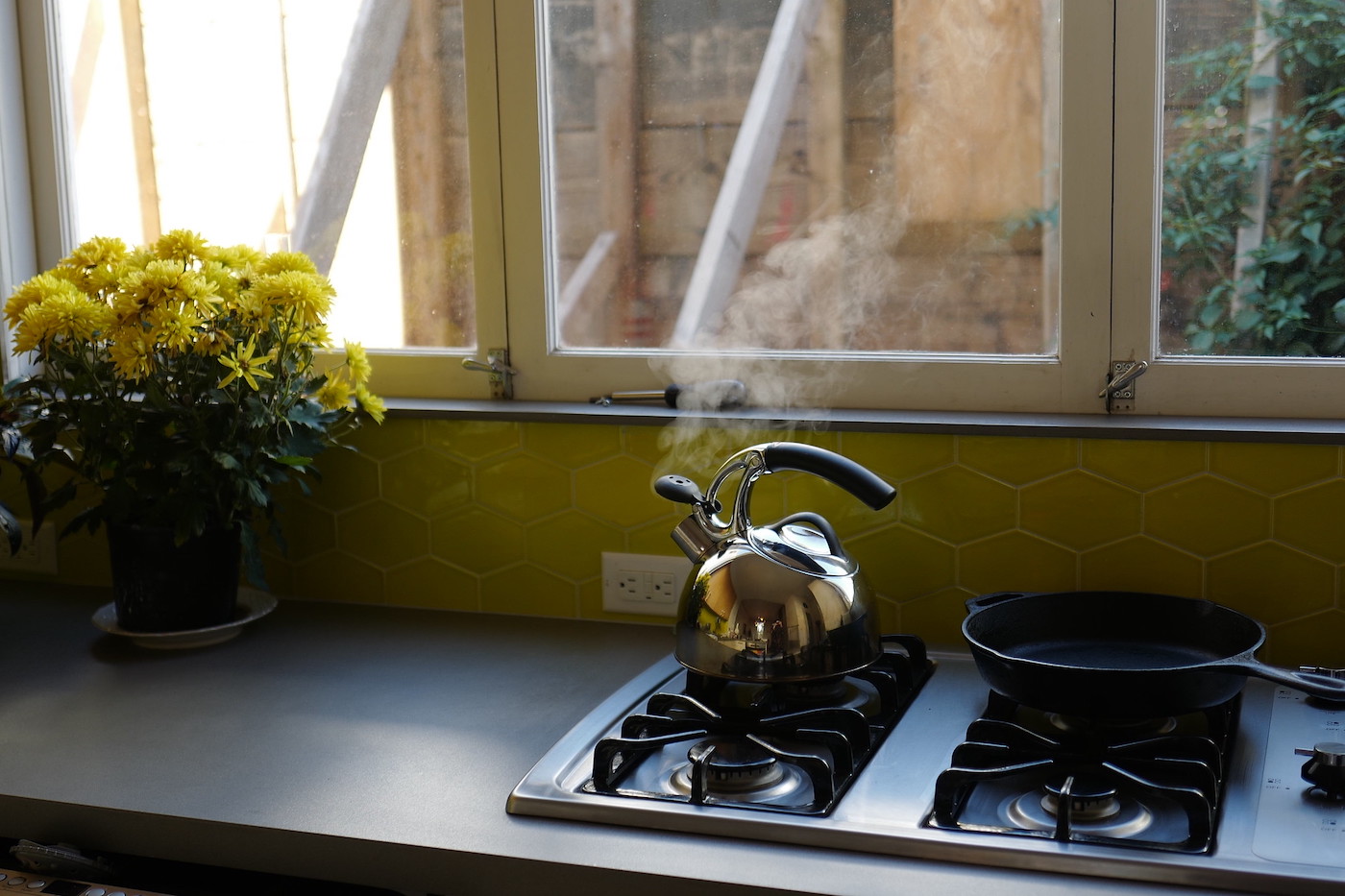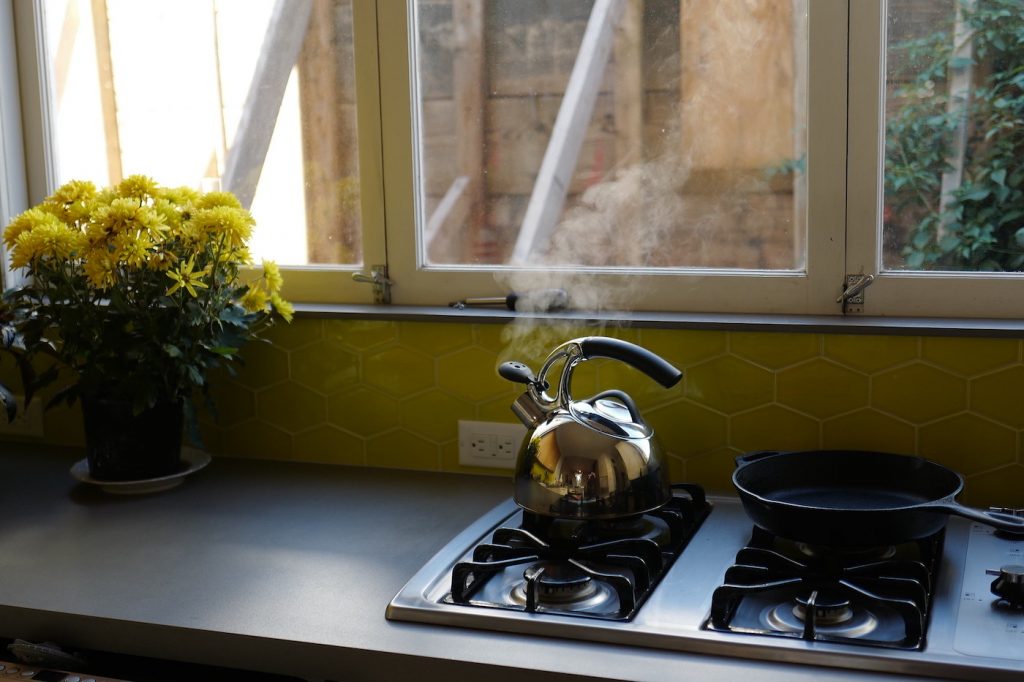Bowing to Anxiety
Approaching OCD as Zen practice The post Bowing to Anxiety first appeared on Tricycle: The Buddhist Review. The post Bowing to Anxiety appeared first on Tricycle: The Buddhist Review.

Personal Reflections Zen Buddhism
Approaching OCD as Zen practice
By Vincent Moore Nov 21, 2024 Photo by Lynn Friedman
Photo by Lynn FriedmanIn all of my years of obsessively checking front-door locks, windows, stoves, and fridges before leaving the house, I never thought that I would one day find myself regularly bowing to household items like these as part of a Zen practice.
While I’ve been coping with anxiety for most of my life, in my early adulthood, I learned that my type of anxiety had a specific name: obsessive-compulsive disorder (OCD). OCD is a mental and behavioral condition characterized by intrusive thoughts as well as compulsive and repetitive behaviors. It’s not a disorder that solely affects quirky television doctors and detectives with impeccably organized offices. Depending on how someone experiences OCD and the severity of their symptoms, their anxieties, like mine, can present as debilitating and their compulsions as time-consuming. The intensity of my experiences with OCD led me to explore different methods of addressing the condition, including Soto Zen Buddhism.
Even before I developed my practice, I often referred to my compulsions as rituals. I used “ritual” to describe the methodical system of checks I engaged in before leaving home, like making sure the stove was off, windows were shut, etc. The checks, double checks, and triple checks (it goes on …) offered me a sense of safety and security that temporarily relieved my anxiety. They equipped me with the momentary confidence I needed to trust in myself and the security of my apartment so that I could leave for the day. However, over time, this system weighed on me and led to increased doubt and stress, resulting in even more rounds of checks—sometimes expanding into other creative ways of seeking assurance.
For instance, after turning off the kitchen faucet, I would frequently swipe my hands back and forth under the spout to ensure no water was coming out. For additional confirmation, I would take a picture of the faucet for proof. Yet, even after all these checks, I still wasn’t confident that things were taken care of properly. Approaching “rituals” in this manner was a hollow experience, unlike how I would later implement them into my life.
Over the past few years, I have developed a formal Soto Zen practice, where I sit zazen daily—schedule and toddler permitting. In the beginning, connecting with my breath soothed my anxiety and relieved my tension. Observing my intrusive thoughts as arising phenomena, or “secretions of the brain,” allowed me to lessen my attachment to the mental chatter and my habitual identification with them. But this relief lasted only for as long as I was sitting. After I stood up from zazen and went about my day, the stove, the fridge, and the front-door lock would yet again demand my hypervigilance. While I was unable to immediately kick my obsessive habits, tapping into the spaciousness and acceptance I found in my early experiences with shikantaza, or “just sitting,” showed me that there could be another way to frame these compulsions. The next step would be to integrate these teachings into the moments when I was off the cushion too.
It was around this time that I came across professor and Buddhist studies scholar Paula Arai, who has written extensively on the parallels of Zen and performing household chores, as well as the sense of healing and focus that these tasks can afford us when we understand them through a Buddhist lens. By reading Arai’s The Little Book of Zen Healing: Japanese Rituals for Beauty, Harmony, and Love, I’ve come to understand how engaging in activities like dishwashing, opening mail, scrubbing the tub, and folding laundry are a part of Zen practice. Additionally, I’ve been studying translations of texts written by Soto Zen founder Eihei Dogen, including the Tenzo Kyokun or Instructions for the Cook. This text details the routine of the tenzo, or head cook of the monastery, where meal preparation is understood as an expression of a fully committed Zen practice. As my practice has deepened, I have begun to open myself up to the idea of fostering more awareness within my off-the-cushion life, viewing each of my everyday activities as an opportunity for practice.
Like zazen, checking the stove can be a time for spaciousness, too, and the impulse to doubt can be just that—an impulse, recognized as such.
This is where the idea of ritualizing my compulsions came into being. Rather than going about my various household safety checks as empty habits that invariably heightened my levels of stress, I decided to take each “check” as a moment to tap into present-moment awareness and engage in zazen. By reframing what I previously identified as demanding into an opportunity to refine my practice, I began to face those instances of compulsivity with more grace and understanding.
When doubt over my ritual practice creeps in, I remember the trust and spaciousness that shikantaza offers me. Similarly to how I show up to my mat for zazen, I try to allow the present moment to arrive in its entirety during my “checks.” Like zazen, checking the stove can be a time for spaciousness, too, and the impulse to doubt can be just that—an impulse, recognized as such. As someone with OCD, it takes a good deal of courage to let the moment be its full self, as the anxieties that bubble up can become quite loud and disruptive. And yet, when I follow this approach, my urge for control relaxes, and my demand for hypervigilance quiets down. I get to allow myself to move on and go about my day.
Bowing also serves as a supportive ritual element in my practice and life with OCD. In Zen Mind, Beginner’s Mind, Shunryu Suzuki Roshi notes that bowing and zazen are not different from each other. Both ritual forms offer ways for us to challenge the dualism of self and other and to fully accept the present moment as it arises. For Suzuki Roshi, bowing is an opportunity for us to better ourselves through sincere effort and attention to each moment as it is. With Suzuki Roshi’s understanding of bowing in mind, I’ve begun integrating bowing into my practice, which allows me to bring zazen off of the cushion and into spaces where I don’t formally sit.
And now that I’m actively recognizing my compulsive behaviors as opportunities for practice, I’m applying bowing to my “checks,” which not only calls for an embodied attention to the present but also offers me time to express gratitude to myself for my effort in showing up completely. Though it might look strange to an onlooker, bowing to household items like a locked door, a blown-out candle, or a shut window provides me with occasions to formally express trust in myself and appreciate where I am in that moment.
I’m grateful to Paula Arai, Eihei Dogen, and Shunryu Suzuki Roshi, for their insights into how Zen practice applies to life outside of formal temple settings. Perceiving everyday chores and child-rearing through a Zen lens creates an abundance of opportunities for practice. Wielding my OCD symptoms as a way to deepen my practice has been beneficial, helping to curb my general sense of anxiety and enrich my practice. As I may be living with this condition for the rest of my life, I might as well weave “checks” into my practice, observing them as reminders to be present, express gratitude, and exercise trust. And when I fall short, which will happen, I can remember that my experiences with anxiety are opportunities to further my practice—that all my compulsions point back to the present moment.
***
If you or a loved one is having difficulties managing symptoms related to obsessive-compulsive disorder, consider reaching out to the following resources or seeking the help of a qualified mental health specialist in your area.
International OCD Foundation Callen-Lorde Behavioral Health![]()
Thank you for subscribing to Tricycle! As a nonprofit, we depend on readers like you to keep Buddhist teachings and practices widely available.

 Fransebas
Fransebas 































